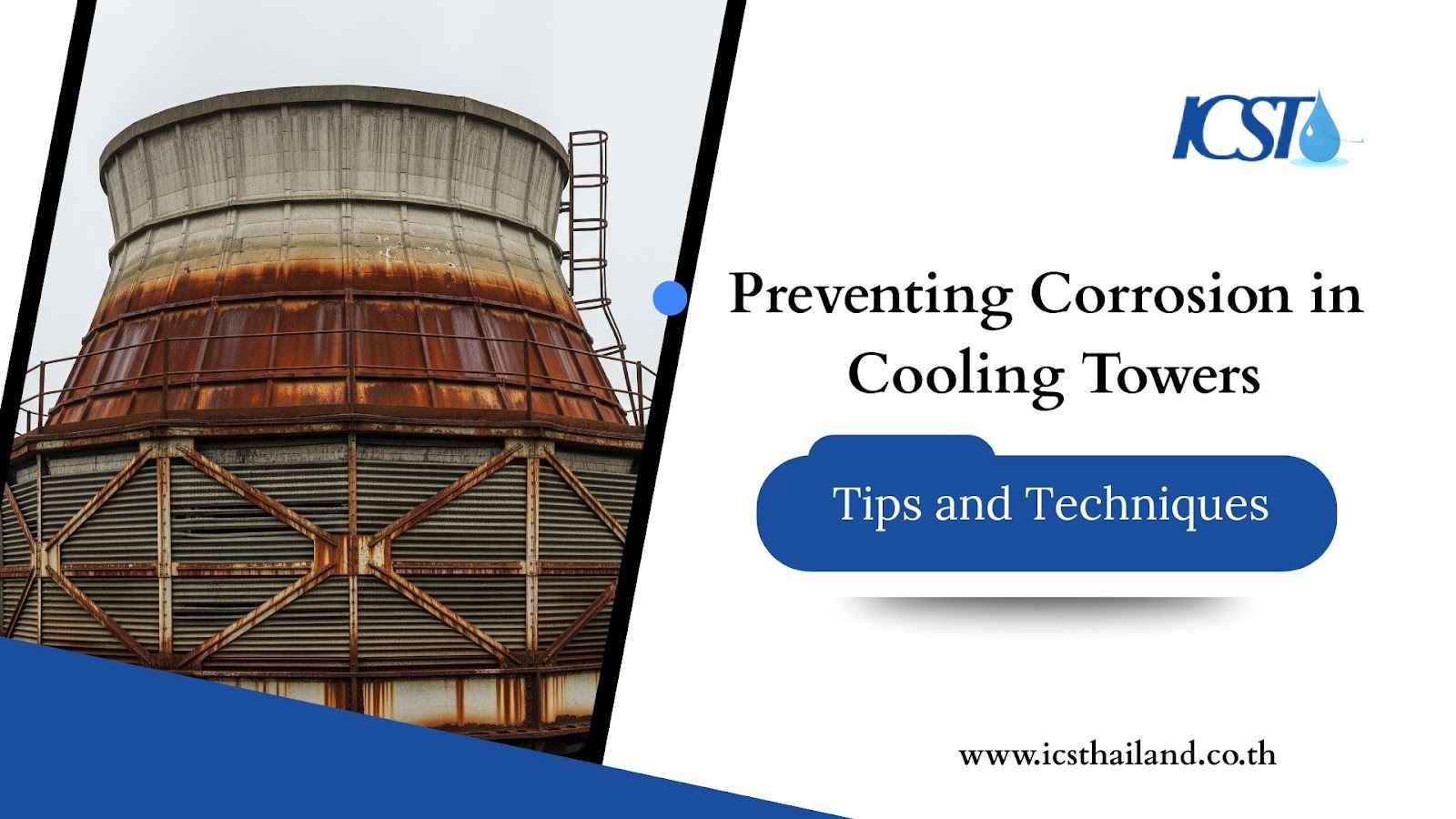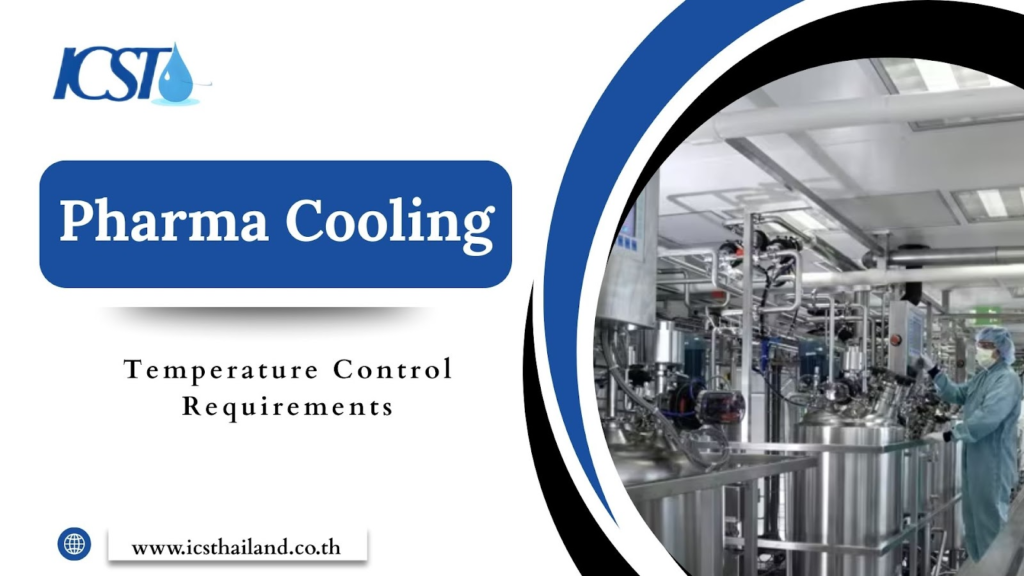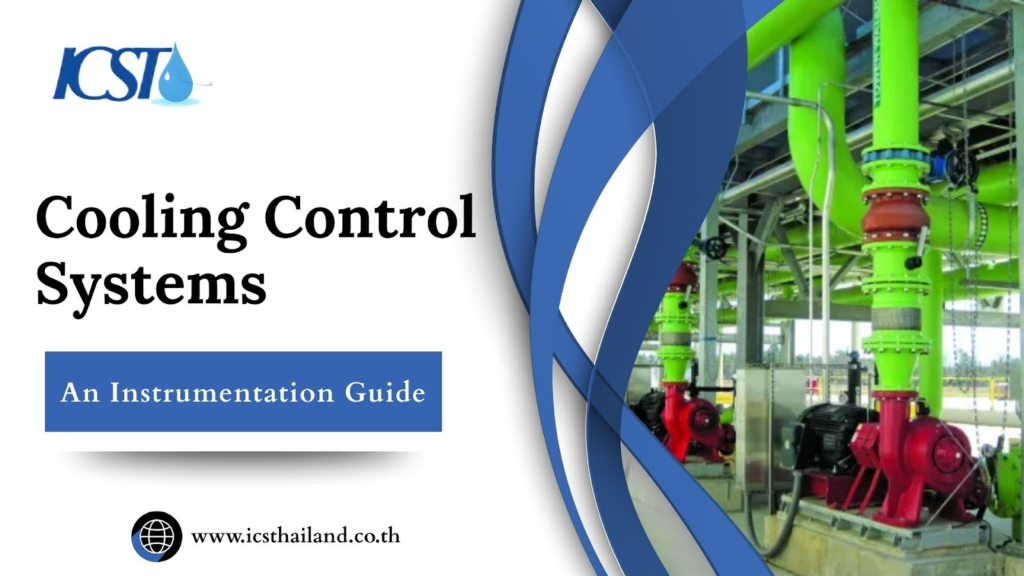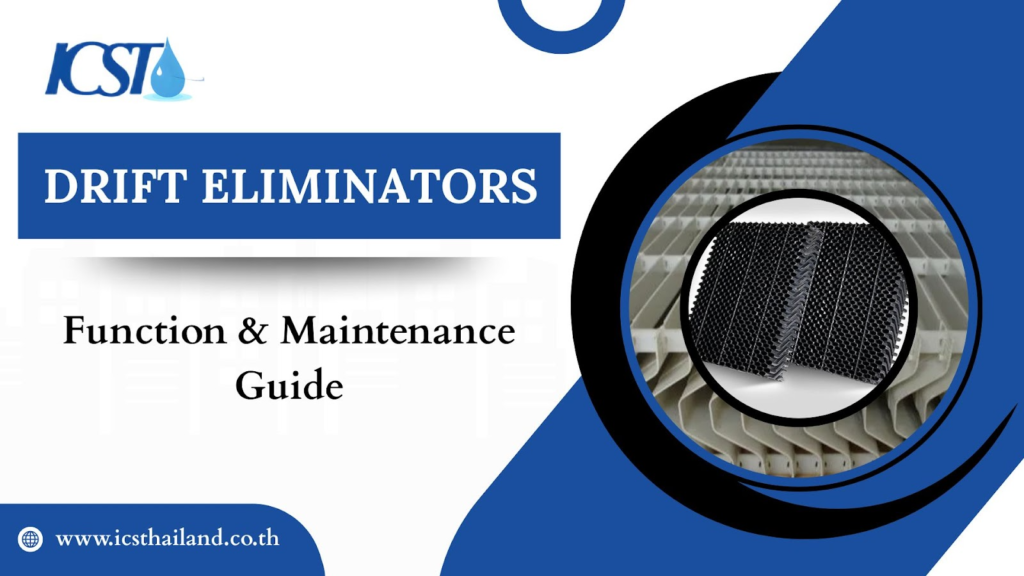Cooling towers play a crucial role in industrial operations, efficiently regulating temperatures in facilities around the globe. Yet lurking within these critical systems is a silent destroyer that costs industries billions annually: corrosion.
This metallic enemy operates around the clock, gradually weakening structural components, reducing thermal efficiency, and setting the stage for catastrophic failures. The statistics are sobering; uncontrolled corrosion can reduce a cooling tower’s lifespan by up to 50% while doubling operational costs.
Corrosion in cooling towers doesn’t have to be an inevitable challenge. With the right knowledge and a proactive approach, you can turn your cooling tower into a reliable, long-lasting system.
This guide offers effective strategies to detect, prevent, and address corrosion in cooling towers, helping you protect your operations and reduce costs.
Table of Contents
ToggleWhy Corrosion is a Major Threat to Your Bottom Line
The financial impact of cooling tower corrosion extends far beyond visible rust spots. This destructive process creates a domino effect that touches every aspect of your operation.
- Structural Integrity Loss represents the most dangerous consequence. Rusty support beams, damaged fan assemblies, and compromised foundations pose significant safety risks
- Reduced Thermal Efficiency occurs when corrosion attacks heat exchanger surfaces. Scale buildup and metal deterioration create thermal barriers that force your system to work exponentially harder. The result? Your cooling capacity drops while energy consumption skyrockets.
- Increased Maintenance and Replacement Costs pile up relentlessly as corrosion spreads. What begins as minor touch-up work quickly escalates to major component replacements.
- Energy Inefficiency becomes a monthly financial burden. Corroded systems can consume 20-30% more electricity to achieve the same cooling effect.
- Downtime and Production Loss deliver the knockout punch to profitability. Manufacturing facilities report losses of $50,000 to $500,000 per hour during unplanned cooling system shutdowns.
Understanding Corrosion: The Key Culprits
Successful corrosion prevention begins with understanding your enemy’s weapons of choice. Several environmental factors work together to accelerate metal degradation in cooling systems.
Water Chemistry serves as the primary battlefield where corrosion victories are won or lost. pH levels that fall outside the ideal range of 6.5 to 8.5 can lead to corrosive conditions that damage metal surfaces. Low pH environments turn water acidic, directly dissolving metals.
Dissolved Oxygen functions as corrosion’s primary fuel source. This seemingly harmless gas drives the electrochemical reactions that transform solid metal into soluble compounds. Higher oxygen concentrations dramatically accelerate corrosion rates, especially in warm water environments.
Microbial Activity introduces biological warfare to the corrosion process. Bacterial colonies create highly acidic microenvironments beneath biofilm layers. These microscopic ecosystems generate hydrogen sulfide, organic acids, and other corrosive byproducts that can penetrate even resistant materials.
Types of Corrosion in Cooling Towers
Recognizing different corrosion patterns helps you deploy targeted countermeasures before minor issues become major disasters.
Uniform Corrosion
Uniform corrosion affects metal surfaces evenly, causing predictable material loss over time.
- It appears as general surface roughening or color changes across large areas.
- Though less dramatic than other corrosion types, it steadily weakens structural components and reduces wall thickness.
- Its predictable nature allows for management through regular inspections and planned replacements.
- Neglecting uniform corrosion can lead to sudden failures when metal thickness falls below safe limits.
Pitting Corrosion
- Pitting corrosion is one of the most dangerous issues in cooling systems due to its localized, penetrating nature.
- Small visible pits often hide significant subsurface damage, making surface appearances deceptive.
- Pitting usually starts at surface imperfections, welds, or areas with failed protective coatings.
- Once formed, pits become more aggressive as concentrated corrosive solutions develop inside them.
- Even a single deep pit can lead to catastrophic equipment failure.
Galvanic Corrosion
- Galvanic corrosion happens when two different metals come into contact in the presence of an electrolyte.
- The less noble metal acts as the anode, corroding quickly to safeguard the more noble metal, which functions as the cathode.
- Common galvanic couples include steel bolts in aluminum heat exchangers or copper tubes connected to steel headers.
- This electrochemical process can destroy components in weeks rather than years. The severity depends on the metal combination, contact area ratio, and electrolyte conductivity. Proper material selection and electrical isolation prevent most galvanic corrosion problems.
Microbiologically Influenced Corrosion (MIC)
- MIC (Microbially Influenced Corrosion) is a complex corrosion mechanism in cooling systems.
- Specific microorganisms contribute to corrosion through their metabolic processes:
- Sulfate-reducing bacteria produce hydrogen sulfide.
- Acid-producing bacteria cause localized pH drops below 2.0.
- Biofilms play a key role in MIC:
- They create protected environments for microbial communities to thrive.
- Biofilms shield bacteria from biocides.
- They concentrate corrosive metabolites against metal surfaces.
- MIC can lead to rapid penetration failures that bypass traditional corrosion protection methods.
Comprehensive Anti-Corrosion Strategy: The Four Pillars of Protection
Effective corrosion control requires a coordinated approach addressing multiple attack vectors simultaneously. These four integrated strategies provide comprehensive protection for your cooling system investment.
Pillar 1: Advanced Chemical Water Treatment
Water treatment forms your primary defense against corrosive conditions. Proper chemical programs neutralize aggressive ions, control pH levels, and create protective barriers on metal surfaces.
- Corrosion Inhibitors provide targeted protection through three distinct mechanisms:
- Anodic Inhibitors form passive oxide layers that block corrosion reactions at metal surfaces. Phosphates and chromates excel at creating these protective films, though environmental concerns have shifted preferences toward safer alternatives like molybdates and tungstates.
- Cathodic Inhibitors interfere with oxygen reduction reactions that drive corrosion processes. Zinc compounds provide excellent cathodic protection while also forming beneficial surface deposits. Polyphosphates offer similar benefits with improved environmental compatibility.
- Film-Forming Inhibitors create physical barriers between metal surfaces and corrosive environments. Azole compounds bond strongly to copper surfaces, while phosphonates provide excellent protection for steel components.
- pH Control maintains water chemistry within safe operating ranges. Automated feed systems continuously monitor pH levels and inject acids or bases to prevent excursions.
- Biocides prevent microbial growth that leads to MIC problems. Oxidizing biocides like chlorine provide broad-spectrum kill rates, while non-oxidizing alternatives target specific problematic organisms.
Pillar 2: Selecting Corrosion-Resistant Materials
Material selection provides long-term corrosion resistance that reduces maintenance requirements and extends equipment life.
Fiber-Reinforced Polymer (FRP) offers exceptional corrosion resistance combined with structural strength and lightweight properties. FRP cooling tower structures are highly resistant to chemical damage and maintain their shape over time. This material prevents issues with galvanic corrosion and offers outstanding thermal performance.
Stainless Steel provides superior corrosion resistance for critical applications where failure consequences are severe. Grade 316 stainless steel offers excellent resistance to chloride attack, while duplex grades provide enhanced strength and pitting resistance.
Strategic use of stainless steel for high-stress components, critical fasteners, and exposed surfaces creates long-lasting installations. The material’s strength properties allow for thinner sections that offset some of the premium material costs.
Pillar 3: Protective Coatings and Linings
Protective coatings create sacrificial or barrier layers that isolate base metals from corrosive environments. Proper coating selection and application provide cost-effective protection for large surface areas.
Galvanizing:
- Zinc coatings protect steel by corroding first, shielding the underlying steel through sacrificial action.
- Hot-dip galvanizing provides the thickest, most durable zinc layers, ensuring long-lasting protection.
- Galvanized coatings typically last 15-25 years in cooling tower environments.
- Regular inspections and touch-ups of damaged areas help extend the coating’s life and prevent localized corrosion.
Epoxy Coatings and Liners:
It creates impermeable barriers that completely isolate metal surfaces from corrosive water. High-performance epoxies resist chemical attack, thermal cycling, and mechanical damage while maintaining adhesion to prepared surfaces.
Pillar 4: Proactive Maintenance and Design
Operational practices and design features significantly influence corrosion rates and detection capabilities. Proactive maintenance identifies problems early, while good design eliminates conditions that promote accelerated attack.
Routine Inspections provide early warning of developing corrosion problems. Visual examinations identify surface changes, coating failures, and structural issues before they become critical. Ultrasonic thickness measurements track metal loss rates and predict remaining component life.
Regular Cleaning removes deposits that create corrosive conditions and hide developing problems. Mechanical cleaning eliminates scale buildup that concentrates aggressive ions against metal surfaces. Chemical cleaning dissolves mineral deposits and biological films that promote localized attack.
Eliminating Stagnant Areas prevents the concentrated corrosive conditions that develop in low-flow zones. Proper basin design ensures complete drainage during shutdowns while operational flow patterns eliminate dead zones where deposits accumulate.
The High Cost of Neglecting Corrosion
Understanding the true cost of corrosion helps justify investment in preventive measures. The following breakdown illustrates typical consequences and associated expenses:
| Corrosion Type | Commonly Affected Area | Consequence | Estimated Repair Cost |
| Uniform | Structural steel, piping | Gradual weakening, scheduled replacement | $15,000 – $50,000 |
| Pitting | Heat exchanger tubes, basins | Sudden leaks, emergency repairs | $25,000 – $100,000 |
| Galvanic | Dissimilar metal joints | Rapid local failure, component replacement | $10,000 – $75,000 |
| MIC | Submerged surfaces, piping | Accelerated penetration, system contamination | $50,000 – $200,000+ |
These figures represent direct cooling tower repair costs and don’t include production losses, emergency service premiums, or collateral equipment damage. Total corrosion-related expenses often exceed repair costs by 300-500%.
Conclusion
Cooling tower corrosion represents a manageable challenge when addressed through comprehensive, proactive strategies. The four-pillar approach, advanced water treatment, corrosion-resistant materials, protective coatings, and proactive maintenance provide robust protection against all common attack mechanisms.
The key to success lies in early intervention and consistent execution. Waiting for visible corrosion signs means expensive repairs and potential safety hazards. Investing in prevention costs a fraction of emergency repairs while ensuring reliable operation.
Corrosion in Cooling Towers can lead to costly damage and reduced efficiency, jeopardizing your entire cooling system investment. Don’t let corrosion silently impact your profitability; act now to secure proven protection strategies. Visit the ICST website today to learn more and safeguard your cooling system for years to come.
Frequently Asked Questions
What are the first signs of cooling tower corrosion to watch for?
Early warning signs include surface discoloration, scale buildup, unusual deposits, and water chemistry changes. Rust stains, pitting marks, and coating failures indicate active corrosion processes. Any sudden changes in system performance or water quality warrant immediate investigation.
Can I prevent all types of corrosion with water treatment alone?
Water treatment provides excellent protection against most corrosion mechanisms, but cannot address all situations. Galvanic corrosion requires proper material selection and electrical isolation.
How long do corrosion inhibitors remain effective?
Inhibitor effectiveness depends on water conditions, system design, and maintenance practices. Most programs require continuous feeding with periodic adjustments based on water analysis results.
How does water temperature affect corrosion rates?
Higher temperatures accelerate all corrosion processes, typically doubling reaction rates for every 18°F (10°C) increase. Hot water also reduces inhibitor effectiveness and increases biological activity. Systems operating above 100°F require enhanced protection programs.
Are FRP cooling towers completely corrosion-proof?
FRP materials resist chemical corrosion but can experience degradation from UV exposure, thermal cycling, and mechanical damage. Proper resin selection, UV-resistant gel coats, and regular maintenance ensure a 25-30 year service life. FRP eliminates galvanic corrosion concerns entirely.








